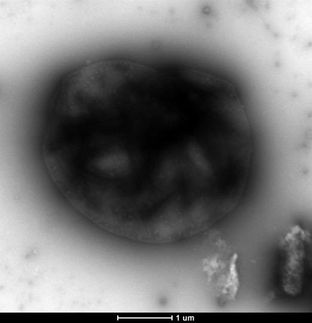Smaller, cheaper microbial fuel cells turn urine into electricity
A new kind of fuel cell that can turn urine into electricity could revolutionize the way we produce bioenergy, particularly in developing countries. The research describes a new design of microbial fuel cell that's smaller, cheaper and more powerful than traditional ones.
The world's supply of fossil fuels is being depleted, and there is increasing pressure to develop new renewable sources of energy. Bioenergy is one such source, and microbial fuel cells can produce it.
In their study, researchers from University of Bath, Queen Mary University of London and the Bristol Robotics Laboratory describe a new design of microbial fuel cell that overcomes two limitations of standard microbial fuel cells: their cost and low power production.
"Microbial fuel cells have real potential to produce renewable bioenergy out of waste matter like urine," said Dr. Mirella Di Lorenzo, corresponding author of the study from the University of Bath. "The world produces huge volumes of urine and if we can harness the potential power of that waste using microbial fuel cells, we could revolutionize the way we make electricity."
Microbial fuel cells are devices that use the natural processes of certain bacteria to turn organic matter into electricity. There are other ways of producing bioenergy, including anaerobic digestion, fermentation and gasification. But microbial fuel cells have the advantage of working at room temperature and pressure. They're efficient, relatively cheap to run and produce less waste than the other methods.
There are, however, some limitations. Microbial fuel cells can be quite expensive to manufacture. The electrodes are usually made of cost-effective materials, but the cathode often contains platinum to speed up the reactions that create the electricity. Also, microbial fuel cells tend to produce less power than the other methods of bioenergy production.
The new miniature microbial fuel cell uses no expensive materials for the cathode; instead it's made of carbon cloth and titanium wire. To speed up the reaction and create more power, it uses a catalyst that's made of glucose and ovalbumin, a protein found in egg white. These are typical constituents of food waste.
"We aim to test and prove the use of carbon catalysts derived from various food wastes as a renewable and low-cost alternative to platinum at the cathode," said corresponding author Dr. Mirella Di Lorenzo from the University of Bath.
They then tweaked the design to see what would produce more power. Doubling the length of the electrodes, from 4mm to 8mm, increased the power output tenfold. By stacking up three of the miniature microbial fuel cells, the researchers were able to increase the power tenfold compared to the output of individual cells.
"Microbial fuel cells could be a great source of energy in developing countries, particularly in impoverished and rural areas," said Jon Chouler, lead author of the study from the University of Bath. "Our new design is cheaper and more powerful than traditional models. Devices like this that can produce electricity from urine could make a real difference by producing sustainable energy from waste."
"We have shown that the cell design has an incidence on performance and we want to further investigate the relevance of electrode surface area to volume ratio on performance. Our aim is to be able to effectively miniaturize the MFC and scale-up power production by generating compact batteries of multiple miniature units," added Dr. Di Lorenzo.




















































